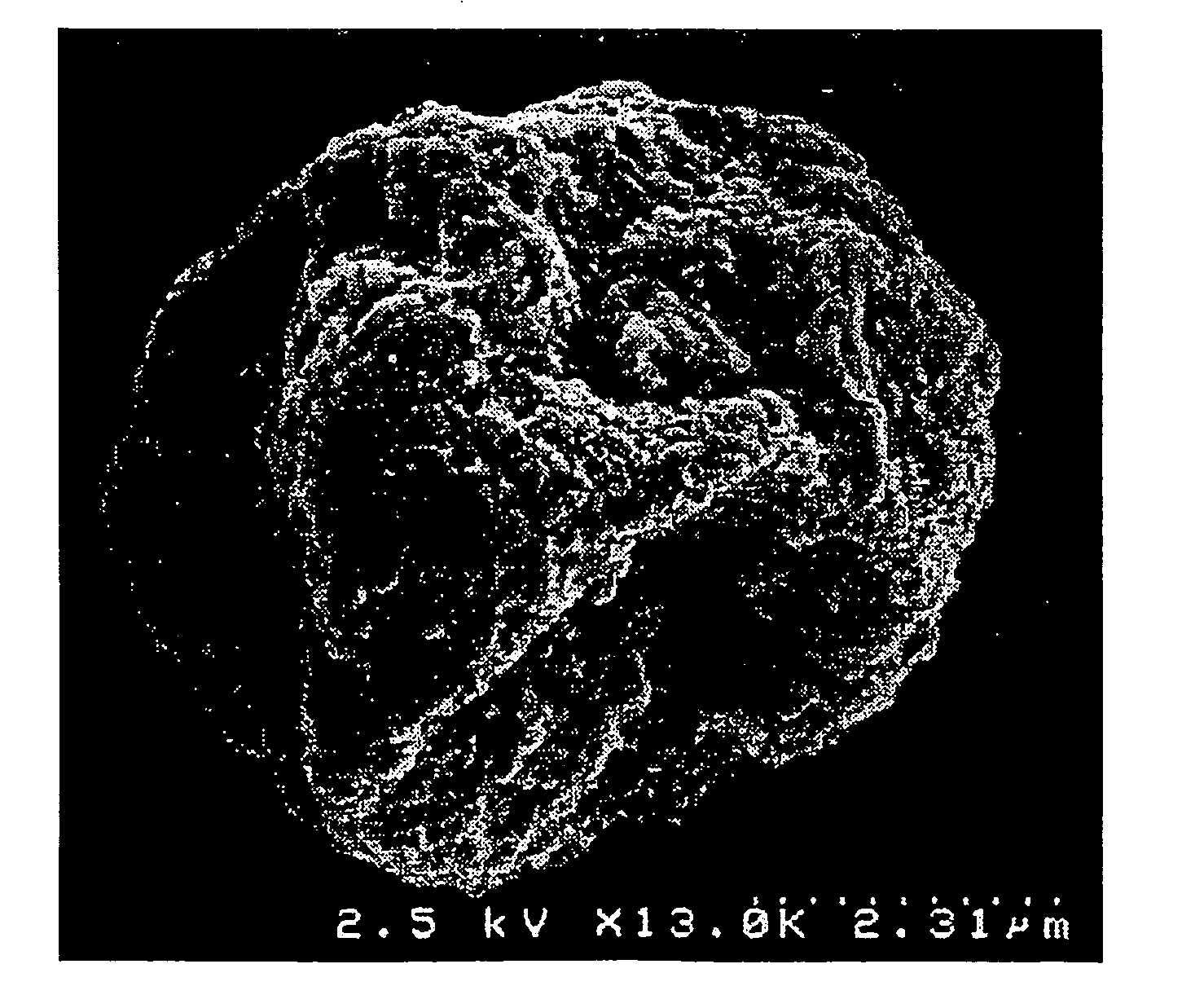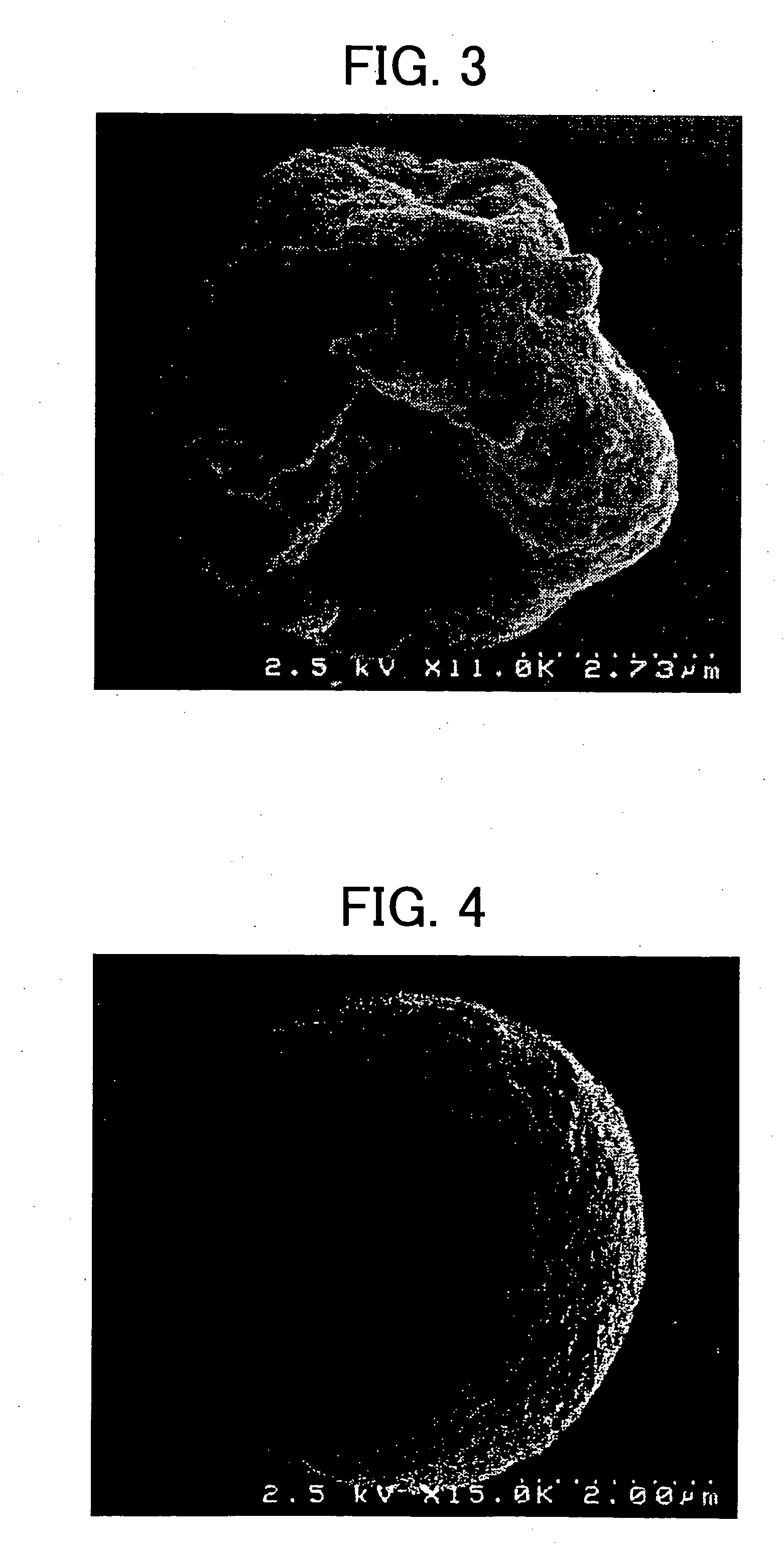Toner and developer using the toner
a technology which is applied in the field of toner and developer, can solve the problems of deterioration of toner yield, limited material that can be used for pulverized toner, and brittle melt-kneaded mixture, etc., and achieves good color performance, chargeability, and fixability. , good color power
- Summary
- Abstract
- Description
- Claims
- Application Information
AI Technical Summary
Benefits of technology
Problems solved by technology
Method used
Image
Examples
example 1
Preparation of Particulate Resin
[0245] In a reaction vessel equipped with a stirrer and a thermometer, 683 parts of water, 11 parts of a sodium salt of sulfate of an ethylene oxide adduct of methacrylic acid (ELEMINOL RS-30 from Sanyo Chemical Industries Ltd.), 83 parts of styrene, 83 parts of methacrylic acid, 110 parts of butyl acrylate, and 1 part of ammonium persulfate were contained and the mixture was agitated with the stirrer for 15 minutes at a revolution of 400 rpm. As a result, a milky emulsion was prepared. Then the emulsion was heated to 75° C. to react the monomers for 5 hours.
[0246] Further, 30 parts of a 1% aqueous solution of ammonium persulfate were added thereto, and the mixture was aged for 5 hours at 75° C. Thus, an aqueous dispersion (i.e., particle dispersion (1)) of a vinyl resin (i.e., a copolymer of styrene / methacrylic acid / butyl acrylate / sodium salt of sulfate of ethylene oxide adduct of methacrylic acid) was prepared.
[0247] The particulate vinyl resin ...
example 2
Preparation of Surface-treated Colorant (2)
[0283] The following components were kneaded for 3 hours with a three-roll mill.
PALIOTOL ® YELLOW D1155250 parts(from BASF Aktiengesellschaft)Sodium chloride700 partsRosin-modified maleic acid resin 12 partsPolyethylene glycol160 parts
[0284] The kneaded mixture was put into about 3 liters of hot water and agitated for 1 hour with a high-speed mixer at 80° C. As a result, a slurry was prepared. The slurry was subjected to filtration and water washing to remove the sodium chloride and the polyethylene glycol, and then vacuum-dried for 24 hours in a hot-air oven at 60° C. Thus, a surface-treated colorant (2) was prepared.
Preparation of Master Batch (2)
[0285] The following components were mixed with HESCHEL MIXER (manufactured by Mitsui Mining Co., Ltd.).
Water1200 partsSurface-treated colorant (2) 540 partsPolyester resin1200 parts
[0286] The mixture was kneaded for 30 minutes at 150° C. with a two-roll mill, and then subjected to rolli...
example 3
Preparation of Master Batch (3)
[0288] The following components were mixed with HESCHEL MIXER (manufactured by Mitsui Mining Co., Ltd.).
Water1200 partsPALIOTOL ® YELLOW D1155 540 parts(from BASF Aktiengesellschaft)Polyester resin1200 parts
[0289] The mixture was kneaded for 30 minutes at 150° C. with a two-roll mill, and then subjected to rolling and cooling. The rolled mixture was pulverized using a pulverizer. Thus, a master batch (3) was prepared.
Preparation of Mother Toner
[0290] The procedure for preparation of the mother toner in Example 1 was repeated except that the master batch (1) was replaced with the master batch (3). Thus, a mother toner (3) was prepared.
PUM
| Property | Measurement | Unit |
|---|---|---|
| Percent by mass | aaaaa | aaaaa |
| Length | aaaaa | aaaaa |
| Melting point | aaaaa | aaaaa |
Abstract
Description
Claims
Application Information
 Login to View More
Login to View More - R&D
- Intellectual Property
- Life Sciences
- Materials
- Tech Scout
- Unparalleled Data Quality
- Higher Quality Content
- 60% Fewer Hallucinations
Browse by: Latest US Patents, China's latest patents, Technical Efficacy Thesaurus, Application Domain, Technology Topic, Popular Technical Reports.
© 2025 PatSnap. All rights reserved.Legal|Privacy policy|Modern Slavery Act Transparency Statement|Sitemap|About US| Contact US: help@patsnap.com



